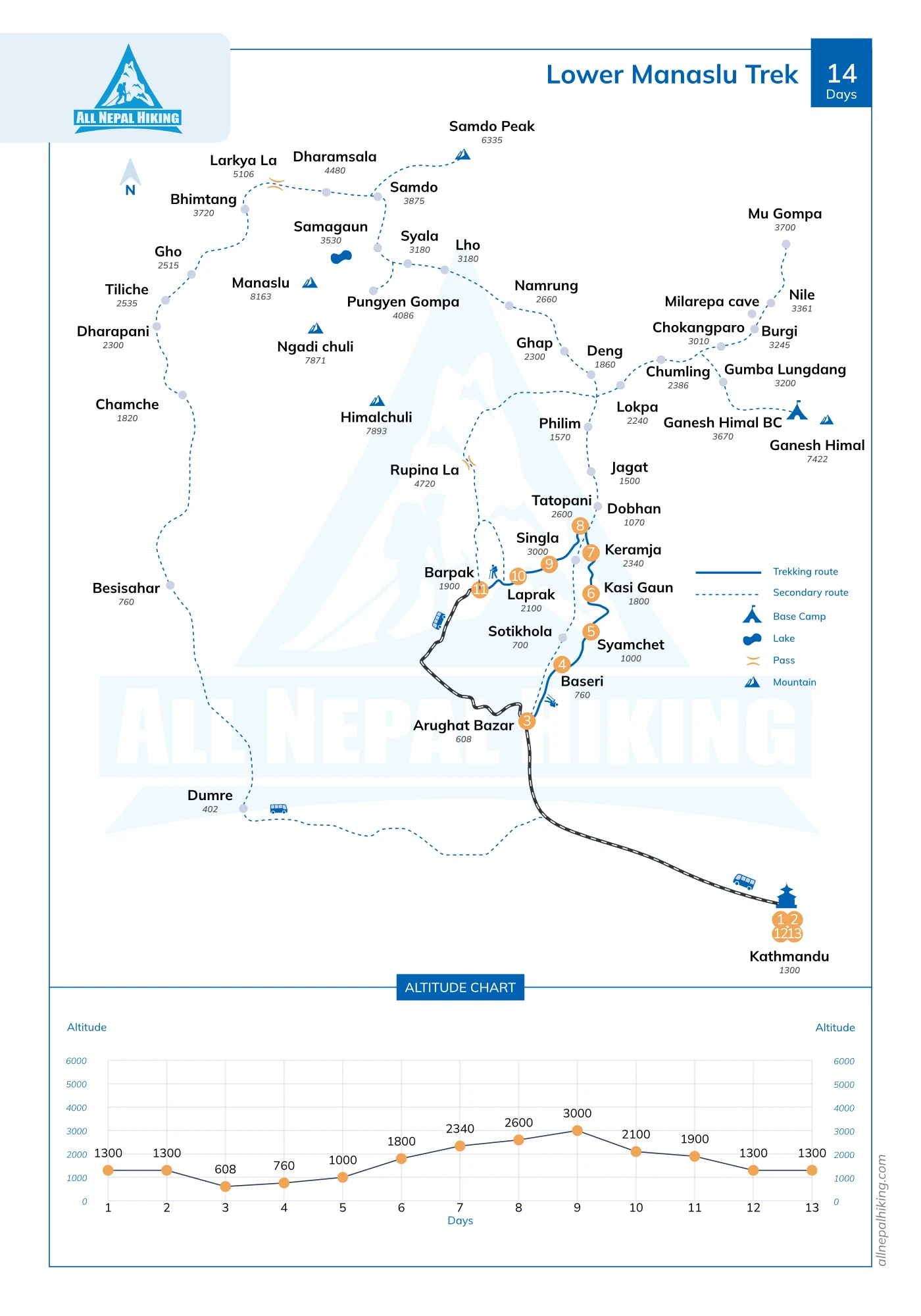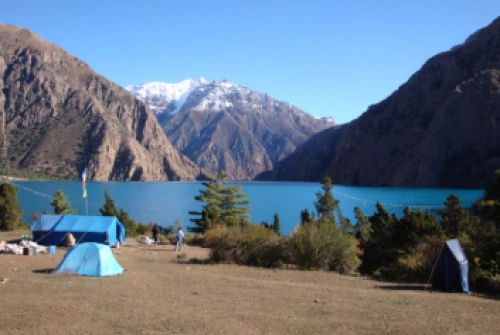Lower Manaslu Trek offers the experience of moderate trekking, Historical tour, Pilgrimage tour, Agrotourism, and Community Based Home – Stay. Lower Manaslu Trek also includes the Manaslu Region, which is the most interesting area of Nepal. A fantastic panoramic view of Mountain ranges from Dhaulagiri, Annapurna, Manaslu, and Ganesh Himal mountain ranges can be seen. The gateway trail goes to upper Manaslu, divided from the day second camp called Khanchok-Ghampesal to Arughat and towards along with Budi Gandaki River. This trek mainly promotes an all-home stay facility for the individual trekkers who have aimed to visit and explore with local people, their culture and the taste of traditional organic products foods, and beverages are even more attractive in this area.
Lower Manaslu Trekking is a famous trekking route in the Manaslu region of Nepal, which is noted for its natural beauty and rich cultural heritage. The walk begins and concludes in Kathmandu via Gorkha and takes you through rural villages, thick forests, and scenic scenery.
During the 10-day trek, you will have the opportunity to explore the traditional villages of the Gurung and Magar ethnic communities, learn about their unique customs and traditions, and enjoy the scenic views of the Himalayas, including the Manaslu range, which is the eighth highest mountain in the world.
The trek also includes a visit to the historic Gorkha Palace, the birthplace of the late King Prithvi Narayan Shah, who unified Nepal in the 18th century. The trail is slightly difficult and appropriate for trekkers of all levels of experience, making it an excellent choice for those who wish to see Nepal's beauty and culture without starting on a more challenging trip.
Best Season for Lower Manaslu Trek
The best time for Manaslu Trek in Nepal are September to November and March to May. These are the two main trekking seasons in Nepal, with bright skies, dry weather, and moderate temperatures, making for great trekking conditions. During these months, the Manaslu Region has stable weather. This makes hiker simpler to hike without worrying about unexpected rain or snow. The sky is mostly clear, providing spectacular views of the mountains and surrounding terrain. In the autumn season (September to November) temperatures are pleasant during the fall season, which lasts from September to November, and the vegetation is lush and green. This is also the time of year when the majority of the local festivities such as Dashain, Tihar, and Loshar in the Manaslu Region take place. This also can be a great way to learn about the local culture and traditions.
During the spring season (March to May), the temperature gets warmer and the rhododendron woods are in full bloom, adding to the splendor of the area. This is also a great time to go bird watching because many migratory bird species visit the Manaslu region during this period. However, it depends on your choice and interest. Also, the weather in the mountainous region is unpredictable. But, All Nepal Hiking always suggests you visit either in autumn or spring to enjoy the natural sceneries as well as cultural diversities.
Tips To Prepare Yourself for Lower Manaslu Trek
- Physical fitness: The Lower Manaslu Journey is a moderately challenging trek. The trek requires long hours of trekking on hilly terrain, uphill and downhill paths, and crossing rivers and streams. As a result, you should prepare by engaging in regular exercise and increasing your stamina, capacity, and strength. Hiking, running, cycling, and weight training are all recommended exercises for you if you are planning to trek to the mountainous region of Nepal.
- Acclimatization: Acclimatization is a very important aspect for high-altitude trekkers such as the Lower Manaslu Trek. All Nepal Hiking always advises you to acclimate to the altitude for a successful trek. Enjoying hours at higher altitudes, going on shorter hikes, a well-balanced diet, and avoiding stressful activities can be more helpful for people.
- Proper gear and equipment: Prepare proper gear and equipment for the trek, such as durable and comfortable hiking boots, waterproof and breathable clothing, warm layers, a hat, gloves, sunglasses, and a sleeping bag. Trekking Planner Nepal also suggests you carry a first-aid kit, trekking poles, a headlamp, and a backpack. But if you don’t want to carry a heavy bag pack during the trek, All Nepal Hiking is here to facilitate you with all the equipment essential for the trek.
- Insurance: Trekking Planner Nepal always suggests you obtain all the necessary insurance documents that cover high-altitude trekking before embarking trek.




